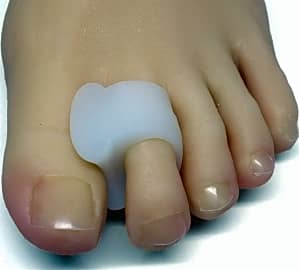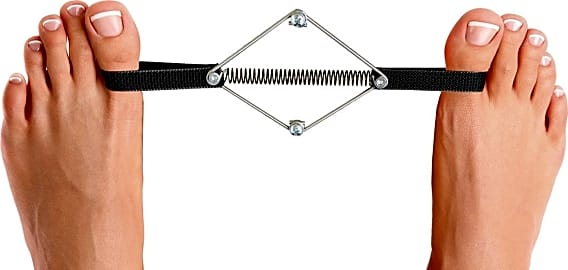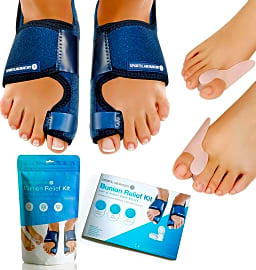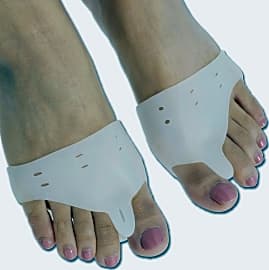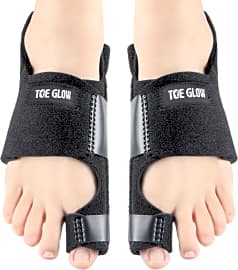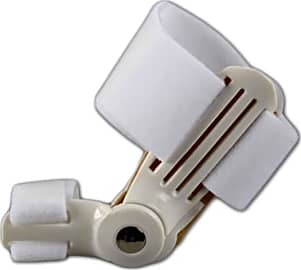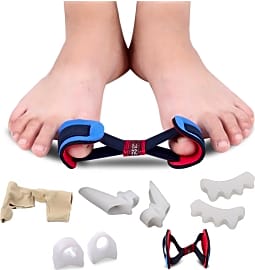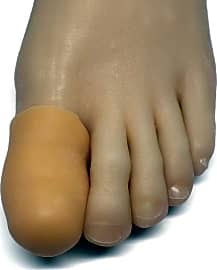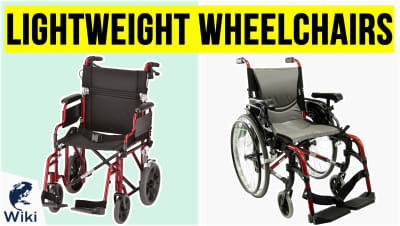The 10 Best Bunion Treatments

This wiki has been updated 37 times since it was first published in September of 2015. We know that bony bump at the base of your big toe can be quite painful, so take a look at our selection of splints and bunion treatments. They can provide you with some much-needed pain relief, and could even help you avoid an expensive surgery down the line. None of these options can replace the advice and diagnosis of a podiatrist, who can determine which one will help your specific condition. When users buy our independently chosen editorial choices, we may earn commissions to help fund the Wiki.
Editor's Notes
January 07, 2020:
There are a wide range of over the counter options when it comes to the painful deformity called hallux valgus, or bunions. Any choice of bunion relief and treatment should be evaluated by your doctor, who can best determine the cause and severity of your individual case.
No other treatment will replace surgical correction, but the recovery is quite difficult, so doctors and patients alike are keen to choose a treatment that can stop the progression of the bunion, and offer enough mild correction that surgery can possibly be avoided.
A splint covering the full foot can be a great overnight choice towards a straighter toe and work best for halting the progression for many. We added the Nypot Corrector to the top spot because the interchangeable splints allow users to customize the treatment based on the severity of the case. A gentle spring instead of a stiff metal splint can go a long way in preventing pain for extreme cases.
The Sports Laboratory Day & Night provides you with a nighttime splint, although only with a metal metal support, and daytime separators for s convenient 24 hour solution.
Milder cases may simply warrant a good quality separator like the Zen Toes Separators. We like these because they are so easy to put on that users will be likely to wear them everyday thereby getting the best results.
Special Honors
Bunion Correction Sandals If you want the benefit of all day alignment but can't seem to squeeze any extra volume into your regular shoes, Toe Labs has created a stylish orthopedic sandal that doesn't look like a medical device. There's an excellent choice of colors and they come in half sizes, but they may be too casual for more formal office environments. comfyfootgear.com
What Exactly Are Bunions?
Studies have shown that bunions may be up to 10 times more common in women than men.
Bunions are bony bumps that form at the base joint of the hallux, commonly referred to as the big toe. It is a deformity of the joint which connects the big toe to the foot. They are usually formed when the big toe pushes in against the toe next to it. This causes the joint to push out abnormally and causes a lateral deviation of the big toe. The deformity is called a hallux valgus and will have a noticeable sideways angle.
Many people incorrectly refer to a bunion as an enlargement of the bone due to the large bump which develops. The bump is actually created by two things, neither of which is an enlargement of the bone. Part of the bump is due to the bursa sac becoming swollen. The bursa sac is a small, viscous fluid-filled sac that provides cushioning between bones, tendons, and muscles. When inflamed it becomes swollen just like any other part of the body. The rest, and larger part, of the bump is the head of the first metatarsal bone sticking out because of the sideways angle. This bone does not grow or become larger, it is just no longer perfectly aligned with the foot, which is why it juts out.
It is not uncommon to also develop smaller bunions, known as bunionettes, on the little toes as they are pushed out of place by the big toe. Bunions often develop a thickening of the skin over the bump which may become swollen, inflamed and painful. Studies have shown that bunions may be up to 10 times more common in women than men.
Symptoms of a bunion include a bulging bump at the outside base of the big toe, pain and soreness localized around the joint of the big toe, thickening skin around the bump, and calluses where the big toe and second toe overlap when walking. This symptoms may or may not be accompanied with restricted movement of the big toe and a deformity of the second toe.
The majority of bunions can be treated at home with no medical intervention, but there are times when a orthopedic foot specialist should be consulted. If one is experiencing persistent pain that is making walking difficult, limited movement of the big toe, or difficulty finding shoes that fit because of the width of your foot after the formation of a bunion, medical intervention might be necessary.
Common Causes Of Bunions
Bunions develop because the pressure of a person's body weight falls unevenly on the joints of the foot. This uneven pressure can make the big toe joint unstable, and over time cause it to jut out at an unusual angle.
Among those who believe that bunions are caused by footwear, there is debate about the types of footwear which are responsible.
There is much debate in the medical community over the underlying cause of bunions. Some professionals feel that it can be caused by wearing certain types of footwear. Among those who believe that bunions are caused by footwear, there is debate about the types of footwear which are responsible. Some feel that they are caused by high-heeled shoes, while other feel that too narrow shoes are to blame, and a third group believes that any kind of shoe that is too tight may be the root cause.
The experts that believe the problem is genetic in pathophysiology do admit that certain types of shoes can exacerbate the problem, though would not cause them on their own without some underlying genetic predisposition. Some genetic conditions that are believed to be root causes of bunions include unusual positioning of certain supportive structures of the first metatarsal, overly flexible ligaments, abnormal bone structure, flat feet, and just a general weakness of the joint. Rheumatoid arthritis and osteoarthritis are also sometimes connected to the development of bunions.
How Bunions Are Treated
Depending on the severity of the bunion, it may be treated with surgery, homeopathic remedies, orthotics, or simply changing footwear. The majority of conservative bunion treatments treat the symptoms, but don't correct the underlying deformity, which means it can flare up and cause problems at any time later in life. So, while changing footwear is a good way to relieve the pain associated with a bunion, it won't help fix the actual problem and you may find yourself in pain when wearing high heels or dress shoes.
For those with more severe bunions, a toe splint, bunion regulator, or toe corrector will most likely be needed.
For those who prefer non-surgical approaches, orthotic splints can be a good solution. They are non-invasive, can be used in the comfort of one's own home, and show a high success rate for bunions. For those with a very moderate bunion problem, gelled toe spacers and bunion cushions may be all that is needed. For those with more severe bunions, a toe splint, bunion regulator, or toe corrector will most likely be needed. Some are designed to be used barefoot, while others are small enough to fit into a shoe for all day wear. Bunion orthotics can be medically prescribed or purchased over-the-counter depending on the model and the style.
There are a variety of bunion surgeries, each designed to correct a specific pathology. A surgery may be performed to shave off the protruding bony enlargement of the first metatarsal, re-position the sesamoid bones, realign the first and adjacent metatarsal bone, realign cartilagenous surfaces, and more. Your heath care provider can provide more information on the best surgical approach if one is required.


